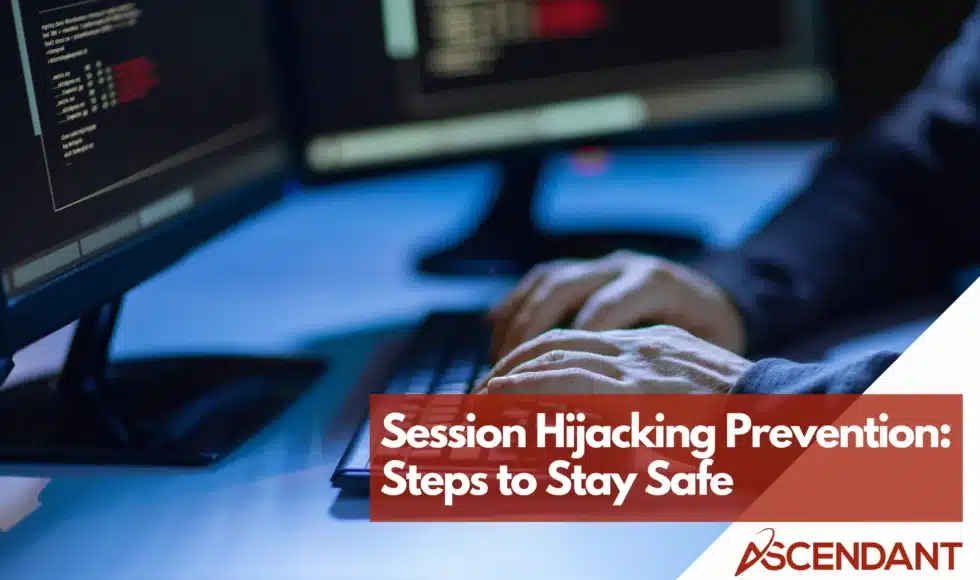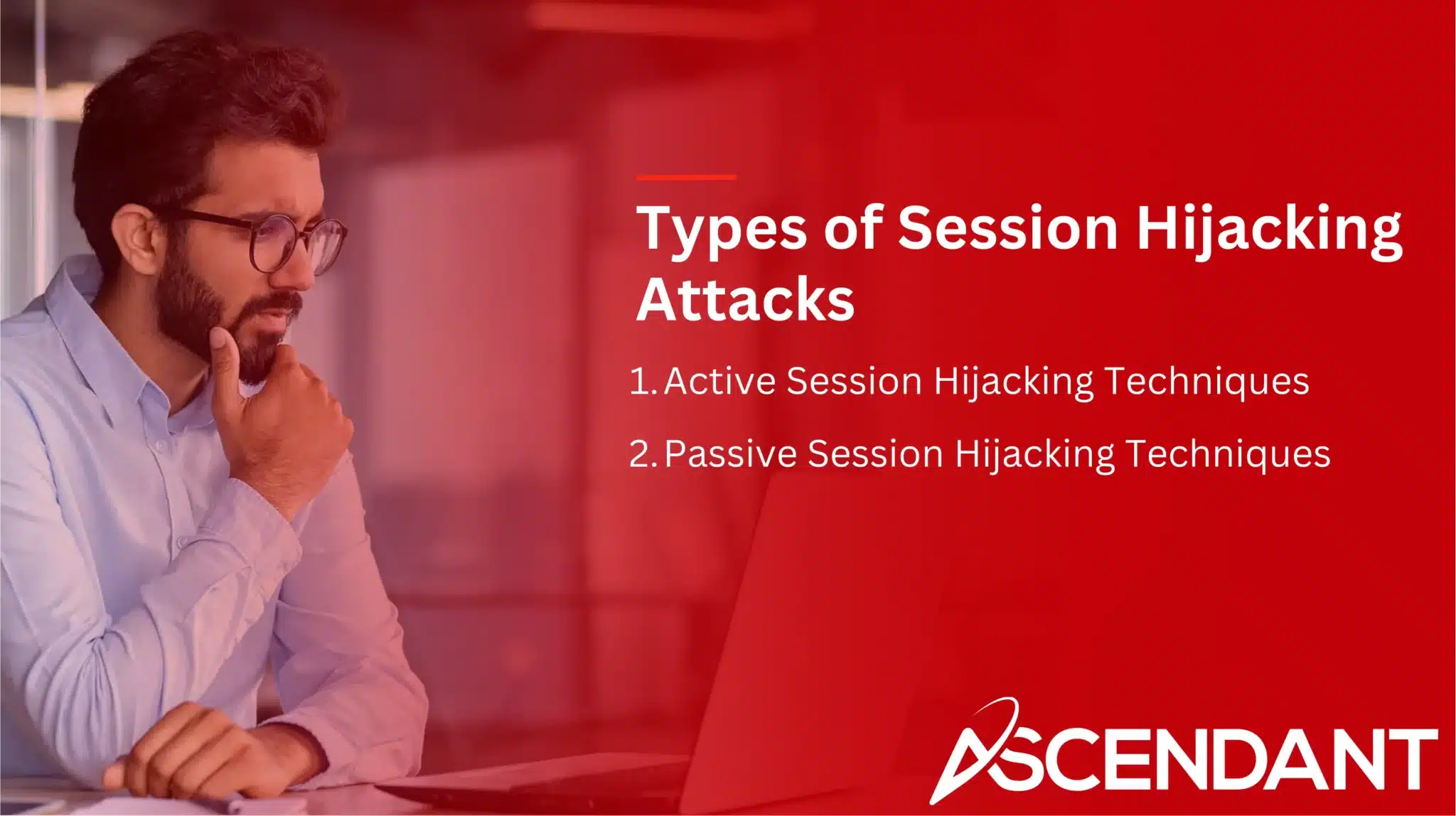Session hijacking is a serious security threat where attackers gain unauthorized access to a user’s web session. By intercepting or stealing session tokens, they can impersonate the user and breach secure systems. This article explains what session hijacking is, how it happens, and effective ways to prevent it.
In This Article:
- Defining Session Hijacking
- How Session Hijacking Occurs
- Types of Session Hijacking Attacks
- The Consequences of Session Hijacking
- Identifying Session Hijacking Attempts
- Preventative Measures Against Session Hijacking
- Responding to a Session Hijacking Incident
- Long-Term Strategies for Enhanced Security
- Ethical Hacking and Research Contributions
- Real-World Examples of Session Hijacking
- Technological Advancements in Prevention
Key Takeaways
- Session hijacking involves unauthorized access to web sessions through the theft or alteration of session tokens, which compromises user data and security.
- Common methods of session hijacking include packet sniffing, Cross-Site Scripting (XSS), and session fixation, each exploiting vulnerabilities in session management.
- Preventive measures against session hijacking encompass using HTTPS, implementing multi-factor authentication, conducting regular security audits, and educating users on recognizing potential threats.
Defining Session Hijacking
Session hijacking is a type of cyberattack where an attacker takes control over a user’s web session by stealing or manipulating their session tokens. These identifiers are essential for maintaining the continuous exchange between a user and a web service, allowing users to remain authenticated. When attackers intercept these tokens, they can gain unauthorized access without needing to overcome the usual authentication barriers.
While engaging with web applications, users typically enjoy uninterrupted interaction after their initial login due in part to these session IDs. An attacker who captures such a token can masquerade as the legitimate account holder, which poses grave security risks, particularly within platforms that facilitate sensitive operations like online banking or shopping services. Utilizing HTTPS is critical because it encrypts all communication and thwarts any attempt at sniffing out the session ID thus keeping valid sessions secure from interference.
Should an intruder successfully execute this kind of assault, they might exploit single sign-on features (SSO), giving them unfettered entry into multiple systems simultaneously. Resulting in personal data exposure and unsanctioned activities leading to significant safety challenges. Understanding how session hijacking works is key for devising effective safeguards against such digital threats.
How Session Hijacking Occurs
When a user logs into an account, a session cookie is created. This cookie, often containing a session ID, is a string of numbers and letters used to identify the user’s session. The session key generated upon user login serves as a unique identifier for maintaining the user’s authenticated state. However, cybercriminals can gain access to a session by stealing the user’s session cookie and acquiring the user’s session id.
Security challenges with session IDs arise from their predictability and lack of encryption. Networks with heavy traffic and numerous active sessions are typical targets for session hijacking attacks.
For instance, in 2019, a vulnerability in Slack allowed attackers to force users into fake session redirects to steal session cookies. Recognizing these vulnerabilities helps prevent session hijacking attacks.
Common Methods of Session Hijacking
Attackers often use packet sniffing to scrutinize network traffic, particularly on networks that lack security measures, with the aim of intercepting session tokens. They engage in session sniffing by observing this traffic to acquire session cookies and commandeer user sessions. Through such techniques, attackers are able to execute successful session hijackings and unlawfully gain access to users’ data contained within these cookies.
Cross-Site Scripting (XSS) assaults enable assailants to embed harmful scripts into web pages frequented by unsuspecting users. When individuals visit such tainted web pages, these scripts have the potential to steal their session cookies, thereby facilitating unauthorized entry.
Session fixation occurs when an attacker convinces a user to log in using a specific pre-established session ID that is under the control of the attacker. This type of attack can commence when attackers dispatch URLs containing a designated session ID—often through deceptive phishing tactics—to their targets.
The techniques used for seizing control over user sessions—including but not limited to those like cross-site scripting (XSS), as well as both forms of infiltration known respectively as ‘session sniffing’ and ‘session fixation’—highlight vulnerabilities which must be addressed urgently in order to secure our digital transaction mechanisms from all who would seek illicit possession over them. It becomes clear that it becomes clear. We require fortification around protection protocols tied directly towards safeguarding against compromise/loss associated specifically with aforementioned “tokens”.
Types of Session Hijacking Attacks
Session hijacking involves two main forms: active and passive attacks, both exploiting vulnerabilities in how sessions are managed. In an active session hijacking attack, the attacker actively uses captured tokens to illicitly gain access to a valid session through methods such as phishing or deploying malware.
In contrast, passive session hijacking is characterized by attackers quietly gathering sensitive data without direct interference with the ongoing session. These distinct strategies of compromising sessions underscore the vital importance of implementing strong security measures designed specifically to thwart unauthorized access through session hacking.
Active Session Hijacking Techniques
Methods for active session hijacking include the following:
- The use of phishing to deceive users into disclosing their session tokens via counterfeit login interfaces.
- Deployment of malware designed to capture valid session tokens from an individual’s computer system.
- Execution of brute force attacks, which entails systematically testing numerous session IDs in attempts to gain unauthorized entry.
Such tactics are aimed at illicitly acquiring personal details and passwords, thereby facilitating identity theft and additional security violations. It is crucial to identify these strategies in order to devise robust countermeasures against them.
Passive Session Hijacking Techniques
Techniques for passive session hijacking typically include the surveillance of a client’s actions to collect relevant information. In these scenarios, an attacker might engage in man-in-the-middle (MITM) attacks by capturing session tokens through devices that have been compromised or via unsecured Wi-Fi connections.
There is the CRIME attack strategy which exploits alterations in request size following compression to enable attackers to take over the pathway of requests. It’s essential to ensure network traffic security and employ strong encryption techniques safeguarding session data against such passive hijacking approaches.
The Consequences of Session Hijacking
Gaining unauthorized entry into accounts can result in the disclosure of confidential data and lead to identity theft. Such intrusions may cause financial harm through illicit transactions that empty bank accounts or engage in fraudulent activities, affecting both individual finances and corporate assets.
The integrity of an organization’s reputation might be gravely compromised by such breaches, as they could erode consumer trust and brand loyalty. This is compounded by the possibility of legal consequences for failing to adhere to regulatory standards. Acknowledging these severe outcomes underscores the critical importance of implementing measures designed specifically to prevent session hijacking attacks.
Identifying Session Hijacking Attempts
Signs of a potential session hijacking attempt include unusual logouts, session expirations, logins at odd times or locations, and multiple login failures from unrecognized IPs. Unexpected changes in session lengths or multiple logins from different locations are indicators of possible hijacking.
Intrusion detection systems (IDS) and anomaly-based detection mechanisms help identify session hijacking attempts. Monitoring user activity, behavioral changes, and employing security tools are key to early detection of suspicious activity.
Preventive Measures Against Session Hijacking
Preventive measures are essential to safeguard against session hijacking attacks. Short session timeout periods can reduce risks by automatically logging users out after inactivity. Avoiding public Wi-Fi, using VPNs, and ensuring URLs start with HTTPS enhance online security.
Technical measures such as HTTPS, secure cookies, and robust session management are vital. Continuous IT environment monitoring and regular security assessments help identify and mitigate risks.
Cybersecurity professionals offer insights into best practices and emerging threats.
Implementing Strong Authentication
By incorporating multi-factor authentication, an extra safeguard is put in place to deter unauthorized access during session hijacking incidents. The utilization of intricate and unique passwords can diminish the likelihood of a successful session hijack. Biometric security measures like fingerprint scanning and facial recognition erect a formidable defense against attempts at unauthorized entry by session hijackers.
Employing biometrics introduces a strong line of defense that substantially increases the difficulty for would-be session hijackers seeking unauthorized access.
Using HTTPS and Encryption
An application without SSL/TLS encryption is vulnerable and may fall prey to session hijacking. It is essential to employ the most current secure web protocols to thwart such attacks. Implementing SSL and using secure cookies when users are authenticating can help in warding off attempts at session hijacking.
Making sure that cookies carrying the session ID are set as HttpOnly prevents client-side JavaScript from getting ahold of the session details. Employing strong encryption practices plays a key role in protecting any intercepted session data against unauthorized access.
Regular Security Audits and Monitoring
Conducting routine cybersecurity reviews is vital to assess the safeguarding of networks and pinpoint strategies to enhance defense mechanisms against session hijacking attempts. It’s essential to persistently observe the network for potential weak spots that could be exploited through session hijacking. The utilization of intrusion detection systems plays a significant role in detecting abnormal patterns in network traffic that may suggest an ongoing session hijacking.
By establishing consistent security evaluations and maintaining relentless vigilance over the network, organizations can bolster their defenses, thus effectively reducing vulnerabilities linked with session hijacking over time.
Responding to a Session Hijacking Incident
Following a session hijacking attack, the first step is to promptly shut down any compromised sessions. It’s also crucial to reset the session tokens swiftly after recognizing such an intrusion.
The subsequent measures include:
- Ending the breached sessions.
- Initiating new session tokens without delay post-detection of the hijacking incident.
To effectively recover from a session hijacking event, it is vital to conduct an in-depth examination and comprehend the extent of the assault thoroughly. Taking steps to rectify all identified weaknesses will aid in averting similar occurrences in future instances.
Long-Term Strategies for Enhanced Security
Instructing clients and users in the identification of phishing scams and dubious materials is an essential strategy for the long haul. It’s important to urge users to employ protected devices and steer clear of engaging with their confidential accounts over public Wi-Fi. Conducting ongoing security evaluations and fostering an environment conscious of security measures are vital steps toward thwarting session hijacking.
Seeking advice from experts specializing in cybersecurity enables organizations to assess their current defenses accurately, while also keeping abreast with recent threat landscapes. The field of cybersecurity research plays a pivotal role as it uncovers fresh susceptibilities and evolves in response to new types of threats that arise.
Ethical Hacking and Research Contributions
Authorized professionals engage in ethical hacking, employing similar methods as malicious hackers to uncover vulnerabilities within systems. These specialists emulate actual cyber threats to assist organizations in identifying and remedying security flaws ahead of time.
Based on their evaluations and discoveries, ethical hackers suggest enhancements to an organization’s security protocols. Their input is crucial for preempting potential dangers and fortifying the general security framework.
Real-World Examples of Session Hijacking
A significant incident of session hijacking occurred when Okta experienced an attack in which a threat actor successfully gained control over sessions pertaining to five customers, achieved by exploiting compromised credentials. The hackers infiltrated Okta’s customer support database and took advantage of the exposed session tokens located within HTTP Archive (HAR) files for the purpose of hijacking those sessions. Organizations that fall victim to such attacks can suffer severe damage to their reputation, leading to diminished trust among their clientele.
These instances from actual events underscore the vital necessity for implementing strong security measures designed specifically to thwart session hijacking attacks and safeguard sensitive personal and business-related data.
Technological Advancements in Prevention
Advancements in technology have bolstered the ability to thwart session hijacking by scrutinizing behavioral patterns, adding a robust layer of security that attackers find hard to breach.
As technology progresses, it consistently refines techniques designed to impede session hijacking, thereby amplifying the difficulty for attackers seeking to capitalize on system weaknesses.
Summary
In summary, it is essential to grasp the concept of session hijacking and be aware of its various techniques, classifications, and potential repercussions in order to put into place strong defensive strategies. Ensuring your online sessions remain safeguarded against nefarious individuals requires both ongoing vigilance and a commitment to constantly enhancing security measures. Keeping up with this knowledge will help preserve a secure digital space.
 Frequently Asked Questions
Frequently Asked Questions
What is session hijacking?
Session hijacking is a cyber attack where unauthorized individuals gain access to a user’s web session by stealing or manipulating session tokens.
It is crucial to implement security measures to protect your sessions from such threats.
How can session hijacking be prevented?
To effectively prevent session hijacking, it is essential to use HTTPS, implement strong authentication protocols, avoid public Wi-Fi, and conduct regular security audits.
Each of these practices contributes significantly to enhancing your security posture.
What are the consequences of session hijacking?
Session hijacking can lead to severe consequences such as exposure of sensitive information, financial loss, identity theft, and significant reputational damage to organizations.
It is crucial to implement robust security measures to mitigate these risks.
What are some common methods of session hijacking?
Common methods of session hijacking include session sniffing, cross-site scripting (XSS), and session fixation attacks.
Awareness of these tactics is essential for implementing effective security measures.
How can you identify a session hijacking attempt?
You can identify a session hijacking attempt through signs such as unexpected logouts, frequent session expirations, logins from unfamiliar locations, and multiple login failures from unrecognized IP addresses.
These indicators warrant immediate attention to safeguard your session and data.


